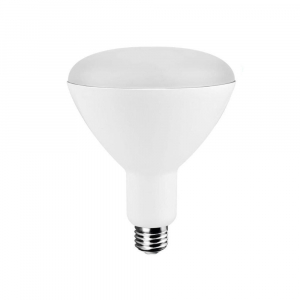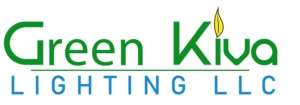Lumens
Lumens is a measurement of light that a device produces. LED light bulbs can produce the same amount of lumens as incandescent light bulbs but with fewer watts. For example, a 9 watt LED light bulb can produce 800 lumens whereas an incandescent light bulb will need 60 watts to produce the same amount of lumens. As manufacturing standards have improved it is much easier to find LED light bulbs with higher lumen counts without spending a fortune.
Illuminance
Illuminance or LUX is the total amount of light that shines on a surface. Although similar, the difference between Lux and Lumens is that lumens measures the total amount of light emitted in all directions and lux measures the total amount of light that is concentrated on an area. For example, a light bulb that produces 1000 lumens over one square meter would mean that we have an illuminance of 1000 lux. However if the same 1000 lumens were spread out over 10 square meters we would only have an illuminance of 100 lux, therefore requiring the need for additional light bulbs to shine light on the desired area.
Color Temperatures
Correlated Color Temperatures (CCT) or color temperatures for short are measured in Kelvins and are often shown abbreviated with the letter “K”. The lower the number the warmer the color. Vintage Style Edison bulbs range between 2000K and 2400K and are amber in color. Soft white bulbs are manufactured in 2700K or 3000K and are white in color but have a slight orange hue. Bright white bulbs can range between 3500K and 4100K and are blueish-white in color. Daylight bulbs 5000K, are white in color. Finally, and not all that common, 6500K are stark white in color.
Color Renderings
Another important factor in selecting LED light bulbs is to consider a light sources CRI or color rendering index. The Color Rendering Index (CRI) measures the ability of a light source to bring out the true colors of an object. Without a high CRI, objects can appear dull, faded, or washed-out. CRI is measured on a scale from 0 to 100 and the closer to 100 the better. A CRI rating of 85 or higher should be considered when purchasing any LED product.
Style Options
Although there are now more styles than ever, below are three of the more popular light bulbs that are used in both residential and commercial applications that have experienced significant improvements in the previously mentioned areas.
LED A19
 The pear shape A19 is the workhorse and most recognizable of all the available light bulbs. It is easy to obtain in standard 60 watt and 100 watt incandescent equivalents in a variety of retail and online stores but more recently higher lumen count A19’s with better color renderings can be acquired without the need for a special order.
The pear shape A19 is the workhorse and most recognizable of all the available light bulbs. It is easy to obtain in standard 60 watt and 100 watt incandescent equivalents in a variety of retail and online stores but more recently higher lumen count A19’s with better color renderings can be acquired without the need for a special order.
LED BR30
 BR30 flood lights are commonly used in both residential and commercial track lighting and recessed lighting fixtures. The most common residential areas are kitchens, living rooms, and recreational room ceilings. Sometimes in residential applications 4100K is a popular color choice because 5000K can cause visual discomfort when the lighting source is not shielded by a lamp shade.
BR30 flood lights are commonly used in both residential and commercial track lighting and recessed lighting fixtures. The most common residential areas are kitchens, living rooms, and recreational room ceilings. Sometimes in residential applications 4100K is a popular color choice because 5000K can cause visual discomfort when the lighting source is not shielded by a lamp shade.
In commercial applications BR30’s are a common light source in art galleries and museums. We often recommend replacing CFL BR30’s with LED BR30’s because LED’s are UV free and will not cause precious artwork to experience discoloration.
LED G40
 G40 globes are popular in residential bathroom vanities and in decorative lighting fixtures in theatres and restaurants. There are two versions, frosted and clear and they are available in 25, 40, and 60 watt incandescent equivalents. As previously stated, if you don’t prefer an LED daylight G40, an LED bright white G40 is always an option.
G40 globes are popular in residential bathroom vanities and in decorative lighting fixtures in theatres and restaurants. There are two versions, frosted and clear and they are available in 25, 40, and 60 watt incandescent equivalents. As previously stated, if you don’t prefer an LED daylight G40, an LED bright white G40 is always an option.

